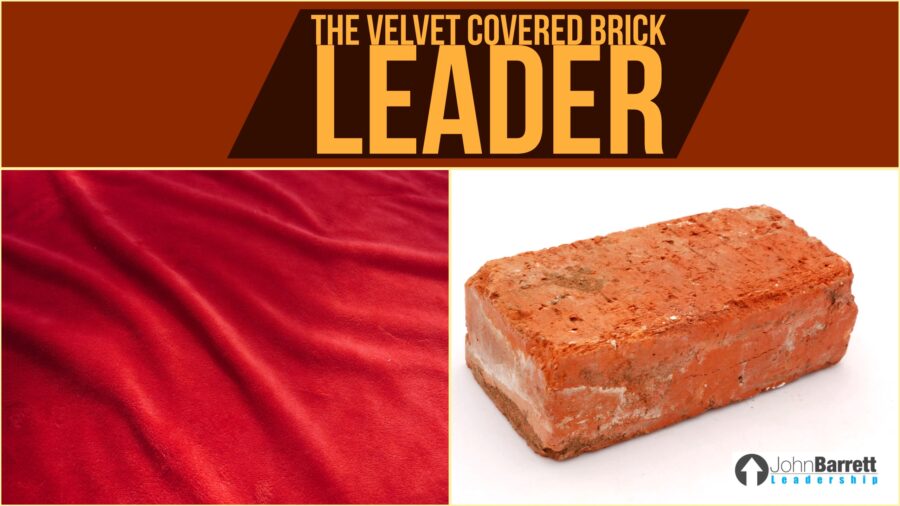The Velvet Covered Brick Leader
In the 1970s, author Howard Butt coined a phrase to help leaders understand how to deal with hard issues. He called it the “Velvet Covered Brick.” The imagery was to help people understand that when dealing with conflict, there has to be a mixture of candor and care. We must not forget that we, as leaders, are here to connect with others for the greater good, not to criticize them. Too many leaders spend the majority of their time criticizing rather than connecting. This constant criticizing causes their influence to diminish. We can’t allow frustrations to control our behavior. Never lash out from anger or bitterness. Let the dust settle enough to deal with the issue with a clear mind and a settled attitude. Many high quality employees have been emotionally decimated through the rage of explosive tempers that have come through uncontrolled leadership that is all brick and no velvet.
Our youngest daughter, who was five at the time, was doing a school assignment one day. She was reading about a character named Reddy the Fox, a mischievous animal being raised by his greedy grandmother. Grandma Fox was teaching Reddy how to capture the chickens at Bowser the Hound’s farm. Allie’s assignment was to write a letter to Reddy the Fox to try to help him become a better and more responsible fox. Here’s what she wrote:
Dear Reddy Fox,
It’s bad the way that you’re doing stuff. You have to stop stealing those chickens. It’s bad to try to kill the dog. Your Granny is evil. Your friends are smarter than you. You should never show Blacky the Crow tricks to make Bowser the Hound die.
Your friend,
Allie
I would say that’s about as candid as it gets. She definitely cut to the chase, and then made sure she ended it with…your friend. Wouldn’t it be nice if we could be so blunt, yet friendly and it be well received? It’s never fun for a leader to deal with the rough, tough, and gruff challenges that people bring—but it is vital. Nobody wakes up each morning hoping to confront others and deal with conflict, but it happens, and somebody’s got to do it. Jack Welch, CEO of General Electric said, “Be candid with everyone.”
Whenever you are dealing with conflict remember this: You’re doing the right thing by being candid when you do it with extreme care. When you truly care about the organization and the people in it you can always be guided by your genuine intentions. Even if people misunderstand you or simply don’t agree with you, you will always know that you did what you thought was best for the situation and for the betterment of the person. Will you always get it right in how you deal with every situation? No, but you can rest at night knowing that you were carefully candid in your approach. Remember this rule: People trust those who are honest with them.
I have heard it said that a good leader is one who can step on your toes without messing up your shine. The better you deal with conflict the less room it has to grow out of control. The heart of being candid is not about whipping your team; it is about equipping your team. When you approach conflict with the agenda of helping rather than hurting then trust will arise over time. Poet Kahlil Gibran said, “Tenderness and kindness are not signs of weakness and despair, but manifestation of strength and resolution.” Great leaders do not treat their people like robots and machines; they treat them more like family and friends.
The heart of being candid is not about whipping your team; it is about equipping your team.
* Taken from the book LEADOLOGY: 12 Ideas To Level Up Your Leadership…available HERE.










